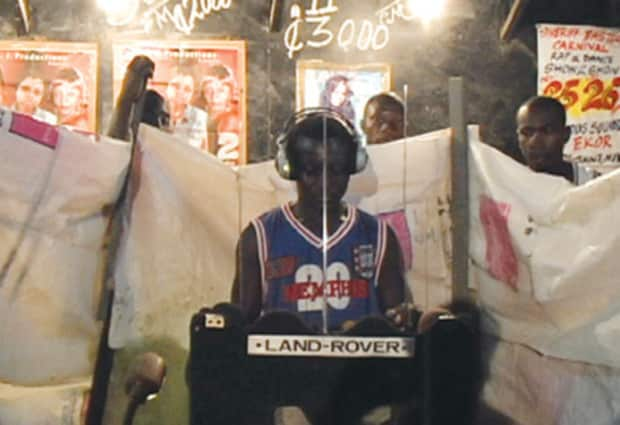One of the key outside contributors to our Africa issue (get it now) was a good dude named Brian Shimkovitz, who lives in Brooklyn but currently resides at Awesome Tapes From Africa. He was instrumental in helping us with Ghana connects and put together an excellent Vinyl Archeology in which he traces the synthesizer through West African music. Read that after the jump and make sure to check Brian's next obsession, awesome tapes from Thailand, on the archive for Jace Rupture's Mudd Up! radio show. PS-Thanks Brian, we owe you a shit ton of (cheap) beers.
SECOND LIFE
The Synthesizer Sounds of West Africa
Compiled by Brian Shimkovitz
When I arrived in Ghana in 2002 for a five month stay I was told highlife—the local music driven by guitars and sweet vocals that had drawn me to West Africa in the first place—was dead. It had been replaced by hiplife, a clunky, still-developing fusion of rap and highlife created by urban youth. So I began to accumulate tapes to find out why. Musicians in Africa first started using drum machines during the late ’70s, but it wasn’t until recently that second-hand personal computers and pirated sequencing programs became more widely available there. Now in Africa, like around the rest of the planet, teenagers huddle around old Pentium 3s making beats with Fruity Loops or stacking vocal tracks in ProTools. Though at times it seems like the continent’s youth are in the midst of a digital revolution, this sonic upheaval actually began gradually. The following is a selected history of the synthesizer’s travels through parts of West Africa. 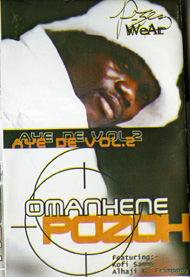
Omanhene Pozoh Aye De, Vol 2 (Super Kaas Music Productions 2001)
Omanhene Pozoh made people pay attention to his relatively forgettable hiplife album by dressing up “Kyenkyen Bi Adi Mawu,” its first track, with the best and funkiest highlife groove ever. Then he invited the sample’s originator to re-sing it. Does it matter that Reggie Rockstone, the undisputed king of hiplife, already took his own version of “Kyenkyen” to the bank a few years prior? Nah. Pozoh slapped a fresh drum program and synth horns on that not-so-dusty riddim and called it a day. Elderly highlife artists hoped this would become a consistent trend, thereby ensuring their luminous role in the rising tide of digital youth culture. It didn’t.
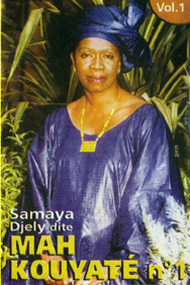
Samaya Djeli dite Mah Kouyate no 1 Samaya Djeli dite Mah Kouyate no 1, Vol 1 (Camara Production 2004)
Mah Kouyate no 1—dubbed as such because there is another, younger singer named Mah Kouyate no 2—has long been known in Mali (and beyond) for her husky, plaintive voice, but Kouyate’s band Samaya Djeli is the reason to die for this tape. Even the acidic blasts of Kouyate’s vocals can’t match the swirling synth kora and vibrato keyboard vamps. The Arthur Russell-meets-Cybotron congas and synths make “Fila Djole” the deepest cut, but Samaya Djeli kill it on pretty much every song here with seven-minute-plus essays on minimalism as maximalism.
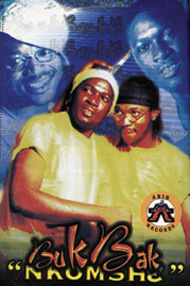
Buk Bak Nkomshe (Abib Records 2001)
Only Jay Q, the impossibly prolific uber-producer from Ghana, could fashion a dense near-masterpiece like this. Before he became the Babyface of hiplife, the man once known as Jeff Quaye played behind-the-scenes mastermind to this underrated electro hiplife opus. The sheer breadth of sounds and styles Jay Q employs here helped define the mainstream hiplife sound through the last half-decade or so. He once told me he used the dzama rhythm of his people—the Ga—to fashion a new hiplife-friendly groove. Dzama was a huge success and biters followed, making this a landmark hiplife recording. It also helped that Buk Bak are fucking geniuses who’ve been running shit forever, releasing a long and steady string of hit albums in a game full of fly-by-night clowns.
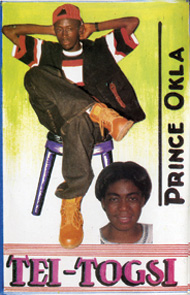
Prince Okla Tei Togsi (I.K’s Production 1998?)
This is feel good music from another planet. Prince Okla sounds kind of like a Ghanaian Daniel Johnston, with out of tune vocals recorded at awkward levels rubbing against clipped timbale cracks and stabs of what must be the “smooth trumpet” setting on your 5th grade Casio. When I met Okla at a barbershop in 2002, this tape had already made its mark. Following its release in the late ’90s, Tei Togsi helped form a blueprint for the current wave of corny Northern Ghana jams—a synthesizer-centric clash of reggae, electro pop, Bollywood and local flavors found in the north’s capital city of Tamale. Oh yeah, and they rap too.
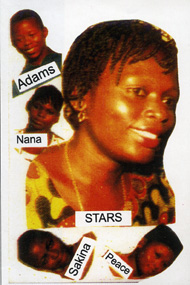
Sirina Issah Cheer the Stars (Self-released 1994)
Blessed Gregory, the man who produced Sirina Issah’s 1994 landmark Cheer the Stars, must be a nut for Jellybean or Little Louie Vega. To foreign ears this is seriously bizarro music, but it’s by no means simply juvenile pop experimentation at the dawn of electronic adventures. These are some of the most sublime and honest teen dance jams I’ve heard. With cameos by an audibly prepubescent Big Adams (Northern Ghana’s first rap icon), this tape is both a historical milestone as the first recording to feature a Northern rapper, and an adorable reminder of how it’s teenagers themselves who can best make life-changing bubblegum pop. Even in dusty yam-farming lands.
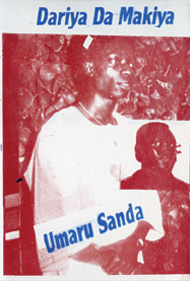
Umaru Sanda Dariya Da Makiya (Amenu Alhaji Issaku & Francis Obey date unknown)
Dariya Da Makiya is not just another tape of eerily saccharine Hausa praise music set to a bouncy beat. (Take my word for it, there are tons.) Keyboard sounds you never thought possible compete with a barrage of talking drums and 808 shakers, whistles and bells. Analog synths sound out sparse—and often epic—lines over slow-developing rhythmic freakouts. And Sanda’s echoey vocal calls, mirrored by a chorus of munchkin responses, is some Japan-meets-Iran-at-a-shopping-mall-in-the-future shit. And like a pious Jersey girl on ecstasy, I’m all over this tape for its haunted sense of happiness and alluring promise of a trip to Hot Topic.
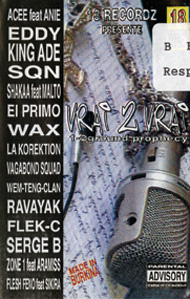
Various Artists 13 Recordz présente Vrai 2 Vrai 1-2ground Prophecy (13 Recordz 2004)
When I was traveling for the first time to Ouagadougou, the capital of Burkina Faso, I met an Indian bicycle parts salesman on the bus. He showed me a cheap hotel close to the center of town since I hadn’t learned French yet. Next to that hotel was a wooden shack of a music shop. I asked the dudes behind the desk about Burkinabé rap and they said this compilation was “serious.” They were right. If anyone is wondering what ever became of that sick ’93 shit we used to love, it’s alive and well and living in Burkina Faso.
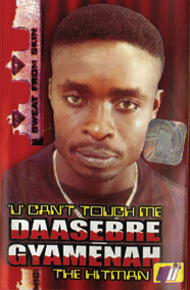
Daasebre Gymenah U Can’t Touch Me (CSP 2001)
Once sequencers and digital processing became firmly entrenched in Ghana, highlife music no longer sounded like sleepy dudes singing beautifully over thuddy drums and plunky guitars (unfortunately). With so many new options, producers would use, like, two to three billion different keyboard tones on one song. Thankfully some artists practiced restraint and still turned out monster hits. Daasebre Gymenah carefully evokes the spirit of pre-crack Bobby Brown to make this a classic. When this first came out I once counted how many times in one day I could hear Daasebre’s smooth croon bless the radio waves while walking around the city. The answer was 15. Bonus: there’s enough voicebox on this tape to sink T-Pain’s battleship.
